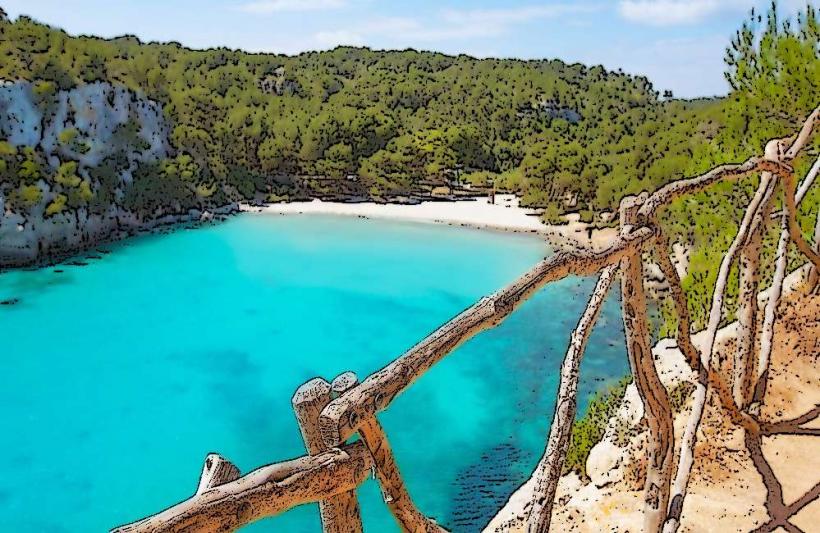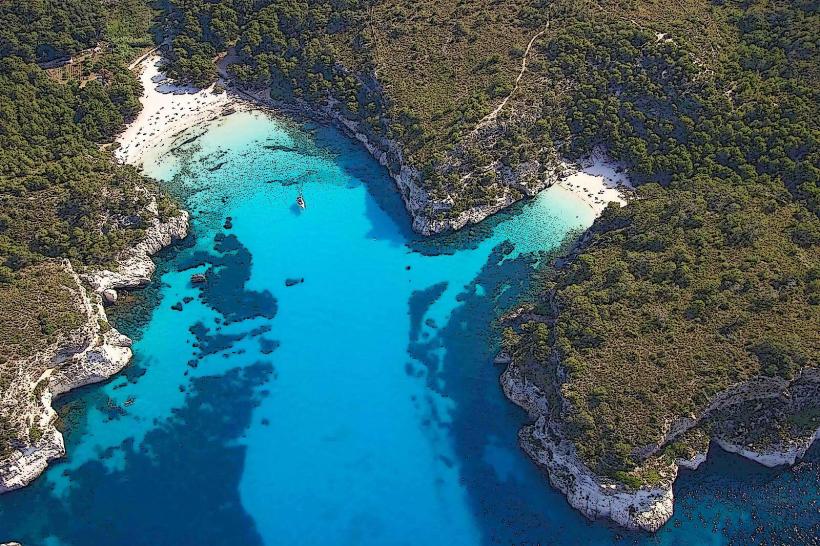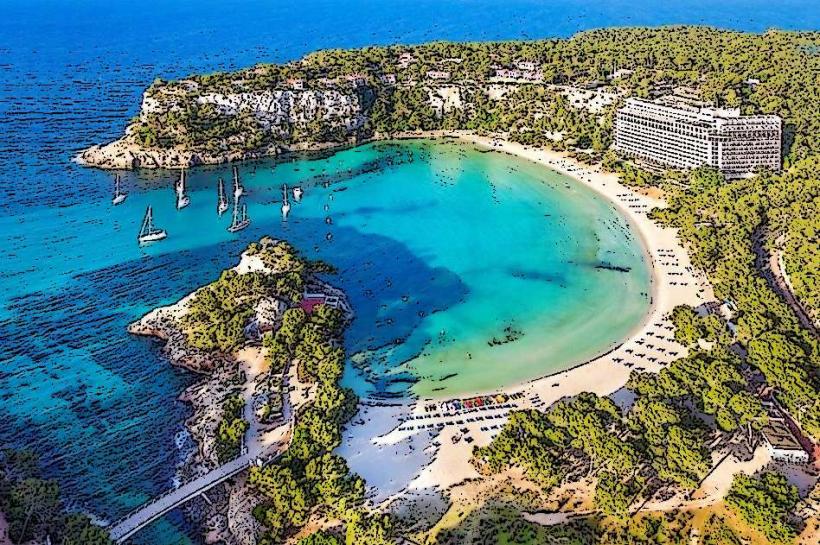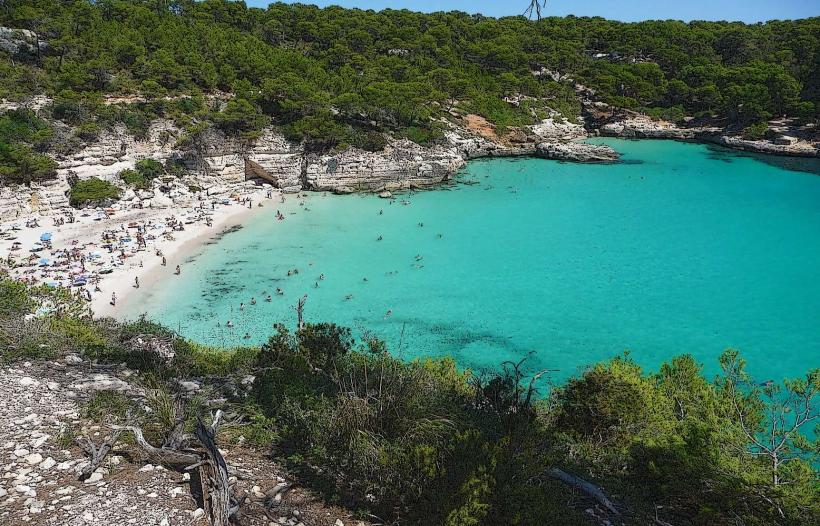Information
Landmark: S’Albufera des Grau Natural ParkCity: Menorca
Country: Balearic Islands
Continent: Europe
S’Albufera des Grau Natural Park is a protected natural area located on the northeastern coast of Menorca, one of the Balearic Islands in Spain. Covering approximately 5,000 hectares, it is the largest natural park on the island and an important ecological site, recognized for its rich biodiversity and stunning landscapes. The park is especially known for its wetlands, salt flats, marshes, and birdlife, making it a prime location for nature lovers, birdwatchers, and outdoor enthusiasts.
1. Ecological Significance
Diverse Habitats:
S’Albufera des Grau is home to a wide range of habitats, including wetlands, salt marshes, mudflats, woodlands, sand dunes, and rocky coastlines. The park is crucial for maintaining the ecological balance of Menorca and serves as a vital area for wildlife conservation. Its diversity of ecosystems supports a wealth of flora and fauna, making it a hotspot for biodiversity.
Flora:
The natural park is home to a wide variety of plant species, including wetland plants, reed beds, cork oaks, and Mediterranean shrubs. In addition to the wetland vegetation, the park features areas of maquis (Mediterranean scrub), pine forests, and wildflowers, all contributing to the park’s environmental richness.
Fauna:
S’Albufera des Grau is particularly famous for its birdlife. The park is an important stopover point for migratory birds and supports a number of endangered species. Among the species that can be found here are the booted eagle, marsh harrier, Montagu's harrier, and various species of herons and waders. The park also supports a range of mammals, amphibians, reptiles, and a wealth of insect species.
UNESCO Biosphere Reserve:
S’Albufera des Grau is part of the Menorca Biosphere Reserve, which is recognized by UNESCO for its natural importance and commitment to conservation. The park plays a critical role in preserving the natural environment and contributing to sustainable tourism on the island.
2. Key Areas within the Park
Albufera des Grau:
The park’s centerpiece is the Albufera, a large lagoon that forms a central feature of the park’s wetland ecosystem. It is a vital area for birdlife, particularly migratory species, and is often referred to as the heart of the park. The lagoon is surrounded by reed beds, marshes, and mudflats, creating an ideal environment for many species of birds and other wildlife.
Cala Mitjana and Cala Trebalúger:
The park is also home to beautiful beaches like Cala Mitjana and Cala Trebalúger, which are located on the coastal area of the park. These beaches are accessible by foot and offer visitors the chance to enjoy crystal-clear waters, sandy shores, and stunning natural scenery. The beaches are ideal for those looking to combine nature walks with a relaxing time by the sea.
Cami de Cavalls:
One of the most significant features of the park is the Cami de Cavalls, a historic coastal path that runs around Menorca. The path passes through parts of S’Albufera des Grau and offers visitors the opportunity to explore the park’s landscapes, coastal areas, and natural beauty. The trail is popular for walking, cycling, and horse riding.
3. Wildlife and Birdwatching
- Birdwatching Paradise:
S’Albufera des Grau is one of the best places on the island for birdwatching. The park’s wetlands, marshes, and coastal areas provide a perfect habitat for a wide variety of birds, both resident and migratory. Birdwatchers can expect to see species such as:- Herons (great egret, little egret)
- Waders (lapwings, curlews, oystercatchers)
- Waterfowl (ducks, coots, swans)
- Raptors (booted eagle, marsh harrier)
- Passerines (songbirds)
- Endangered Species:
Some of the most significant species found in the park are endangered, making it an essential site for conservation efforts. The marsh harrier, for example, is a bird of prey that thrives in the park’s wetland areas, while the Menorca salamander is a rare amphibian species found within the park.
4. Outdoor Activities
Walking and Hiking:
The park offers several walking trails that take visitors through the different habitats within the natural park. These trails offer great opportunities to experience the park's diversity up close, from walking along the wetlands to exploring the coastal cliffs. Some of the popular trails include:
- Albufera Lagoon Trail: A short, accessible walk around the lagoon, perfect for birdwatching.
- Cala Mitjana Trail: A more challenging hike that connects the park to the beautiful beaches of Cala Mitjana.
Cycling:
The park’s broad network of trails and relatively flat terrain make it a great spot for cycling. Visitors can ride through the park’s landscapes and explore its diverse environments, including wetlands, forests, and beaches. The Cami de Cavalls also offers ample opportunities for cycling around the island’s coastline, with scenic routes passing through S’Albufera des Grau.
Kayaking and Canoeing:
The park’s coastal waters are ideal for kayaking and canoeing. Visitors can explore the park from the water, enjoying the scenic views and wildlife along the way. The Albufera Lagoon is a particularly popular spot for water activities, where people can paddle through the shallow waters surrounded by reed beds.
5. Visitor Facilities
Information Centers:
The park has an information center located in Es Grau, a nearby village, where visitors can learn more about the park's history, wildlife, and conservation efforts. The center provides maps, brochures, and advice on the best trails and activities in the park.
Visitor Routes:
Clearly marked visitor routes are available throughout the park, ensuring that guests can explore the area easily and safely. Some of the trails are designed to be accessible for families with children and individuals with mobility issues.
Guided Tours:
For those looking to learn more about the park’s ecology and wildlife, guided tours are available. These tours are led by knowledgeable guides who can provide in-depth information about the flora, fauna, and history of the park.
6. Best Time to Visit
Spring and Autumn:
The best time to visit S’Albufera des Grau Natural Park is during the spring (March to May) and autumn (September to November) months. During these seasons, the weather is mild, and wildlife activity is at its peak, especially for birdwatching. Spring brings the chance to see migrating birds and the blooming of flowers, while autumn offers great conditions for hiking and outdoor activities.
Summer:
While summer (June to August) is also a good time to visit, it can get hotter, and some areas of the park may be busier with tourists. Early mornings or late afternoons are the best times to explore, as temperatures are more comfortable.
7. Conclusion
S’Albufera des Grau Natural Park is one of Menorca’s most treasured natural areas, offering a unique combination of wetlands, coastal landscapes, and wildlife. Whether you're an avid birdwatcher, a nature enthusiast, or someone simply looking for a peaceful escape in nature, the park offers an abundance of opportunities for outdoor activities, wildlife viewing, and exploration. Its diverse habitats, rich biodiversity, and historical significance make it an essential destination for anyone visiting Menorca.





